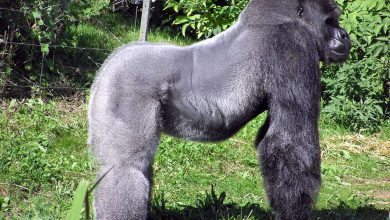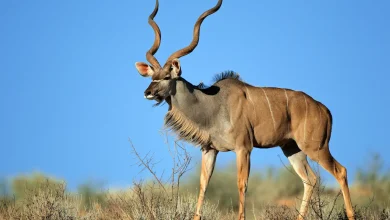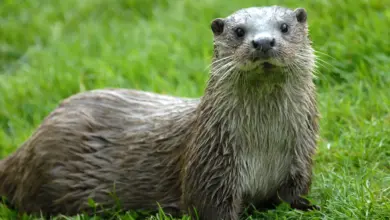What Eats A Chimpanzee?
What Eats A Chimpanzee? What Do Chimpanzees Eat?
What eats a chimpanzee? As our closest living relatives share 98% of human DNA, chimpanzees captivate the fascination of researchers and wildlife enthusiasts alike. These highly intelligent great apes display intriguingly complex social behaviors and survival strategies.
However, chimpanzees must also contend with a suite of lethal predators throughout their native habitats in Equatorial Africa. Both opportunistic and active hunters threaten chimps, particularly vulnerable individuals like juveniles or solitary adults.
Let’s take a complete look at which animals and predatory birds eat chimpanzees:
Leopards
Leopards are one of the most dangerous and frequent predators of chimpanzees. These big cats are powerful hunters equipped with strength, stealth, and lethal weaponry that make them a serious threat. An adult leopard can easily overpower a grown chimpanzee.
They usually target younger, weaker, or isolated chimps that have strayed from the group. Leopards are patient, opportunistic hunters who will quietly wait in trees and bushes for the chance to ambush their prey before attacking with lightning speed.
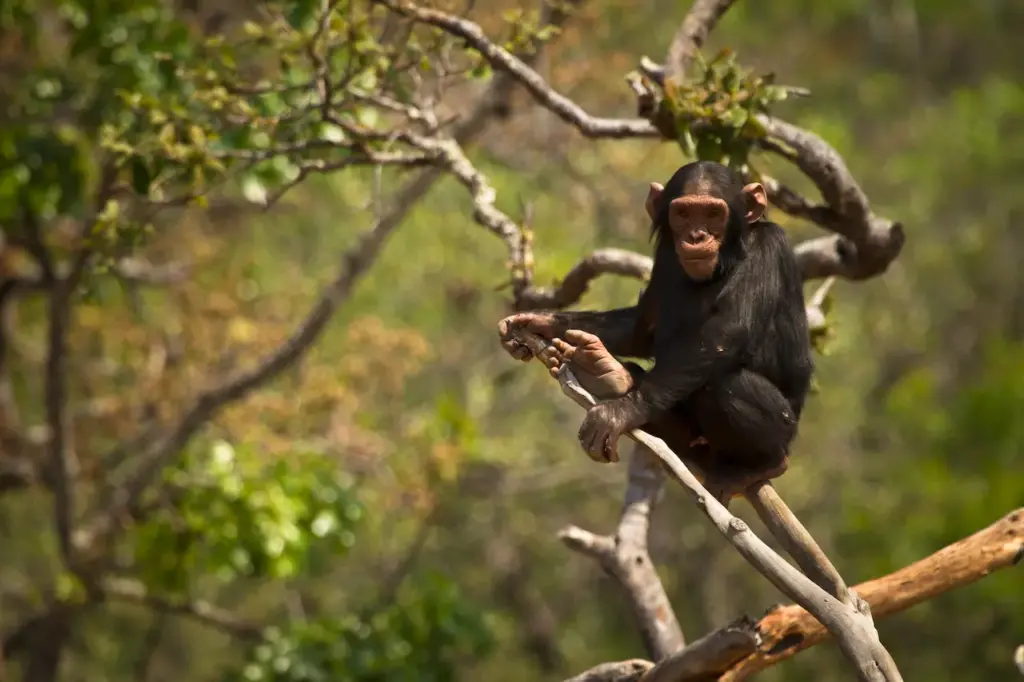
What Eats A Chimpanzee
They effectively stalk chimps by blending into vegetation and creeping close enough to pounce. Once within striking range, leopards use their muscular bodies, sharp claws, and vice-like jaws to inflict fatal wounds on chimpanzees.
They aim to puncture major arteries or snap necks with a strangulating bite. Leopards regularly prey on chimps and actively hunt them as a food source in areas where they coexist.
Lions
As apex predators of the African savanna, lions frequently prey on chimpanzees, especially when easier targets aren’t readily available. Male lions are powerful enough to take down even healthy adult chimps due to their immense power and size.
Lions weigh over 400 pounds on average and work cooperatively to isolate and attack prey from multiple directions. Because chimps often gather food from the ground away from the safety of trees, they can wander into areas where lions quietly wait to ambush them from tall grass or thicker bushes.
Due to living in large social pride, groups of lions can coordinate surprise attacks on chimps once they’ve been tracked and located. Using teamwork and staggered formations, they charge toward chimpanzees from multiple flanks and angles to corral, overwhelm, and subdue them by forcing quick flight into trees.
Though chimps are incredibly strong, they are generally outmatched against a fully grown lion in a one-on-one fight. Lions apply lethal suffocation bites to the neck or use their canine teeth to pierce organs for the killing stroke. The big cats represent a definite menace to chimpanzee populations in shared living areas.
Pythons
As non-venomous yet aggressive constrictors, pythons pose a very real danger to chimpanzees, especially younger ones. Chimps love to play, travel, and lounge up in the tree canopy, often resting in more relaxed upright postures upon the branches.
This exposes them to lurking predators like pythons that remain patiently camouflaged for the chance to strike. While pythons typically eat smaller mammalian prey, larger species like African rock pythons and reticulated pythons can swallow a baby chimp whole.
They stealthily lurk up in thick tree branches before attacking their victims suddenly with a quick bite. Their backward-facing teeth enable them to immediately start pulling chimpanzees into their coils while rapidly wrapping their long, muscular bodies tightly around the prey.
From here, they slowly constrict by exerting immense pressures that lead to circulatory arrest and death by cardiac arrest within minutes. Though rare, such disturbing predation events highlight the danger of pythons present from above.
Crocodiles
As aggressive apex aquatic hunters, crocodiles are another major predator of chimpanzees in Africa. Their habitats frequently overlap around rivers, lakes, and wetlands, placing them in dangerous proximity to each other.
Chimps require frequent access to water for drinking and bathing purposes, which can bring them toe to toe with patient crocodilian ambush predators. Nile crocodiles, in particular, explode out of nowhere from right at the water’s edge to attack chimps seeking to quench their thirst.
Before they can react, the huge reptiles seize them fiercely within their massive jaws before retreating into the water. They proceed to perform signature death roll maneuvers that function to drown and forcibly tear off chimpanzee limbs in a vicious frenzy. Crocodiles can grow upwards of 20 feet long and weigh a ton.
This makes even fully grown adult chimpanzees vulnerable to them in watery habitats despite chimps possessing greater land agility and intelligence. Only the strongest coordinated mob attacks enable chimps to repel crocs from fishing their young.
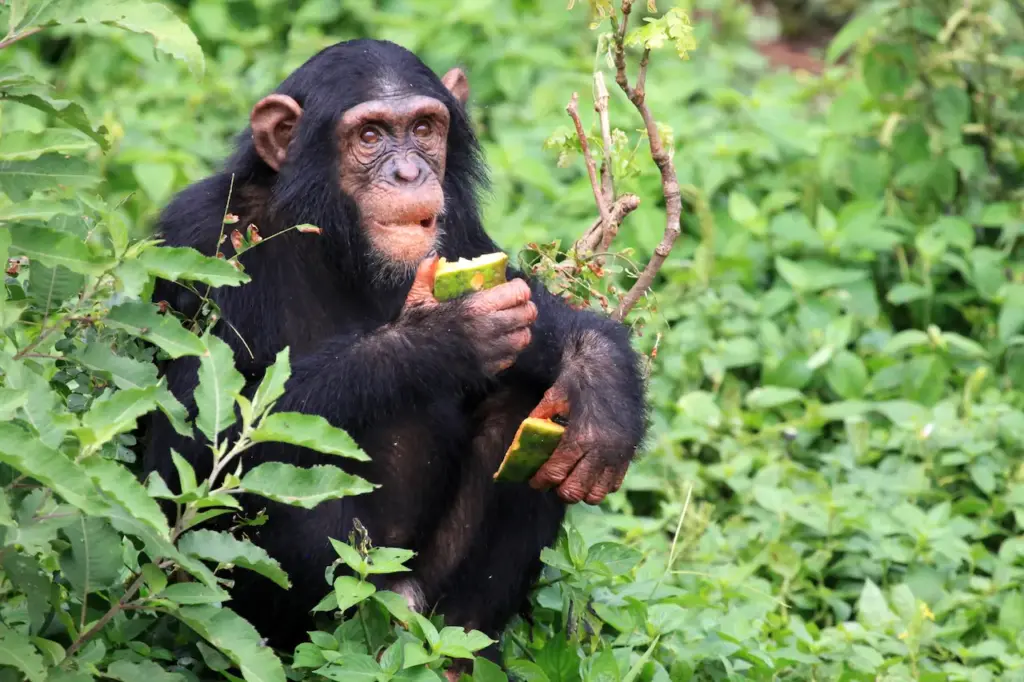
Golden Eagles
Though chimpanzees spend much time high up prowling the forest canopies, golden eagles pose an aerial threat from above through swift ambush assaults. These aggressive birds of prey have sharp talons and hooked beaks specifically designed for hunting mammals.
Juvenile chimps are most vulnerable given their more naïve nature, smaller size, and tendency to wander from mothers. However, male eagles have even attacked fully grown adult chimpanzees through surprise strikes, targeting them headfirst off of branches. Initially, the eagles collide with chimps from behind or the side, knocking them off balance before latching onto them and throwing them crashing toward the ground below.
From here, they may circle back around to inspect if the injured prey is still moveable before feeding. Though golden eagles mostly pursue smaller targets for sustenance, they opportunistically prey on great apes, with recorded cases of successful chimpanzee kills.
Hyenas
While not as frequent as chimpanzee attackers compared to big cats, hyenas still pose periodic threats, especially to younger or weakened specimens that isolate themselves from protective packs. Hyenas, including spotted hyenas and striped hyenas, have evolved extremely powerful jaws and bone-crushing teeth ideal for dismantling large carcasses.
They typically drag off leftovers from other kills, but hyena clans can proactively hunt in groups when regular food grows scarce. These social hunters cooperate almost like wolf packs in using strategic formations and assigning roles to isolate and exhaust prey.
Up to 80 hyenas may band together for bigger games, like chimpanzees, that require mob attacks. While adult chimps can vigorously fight them off in the trees, lone chimps on the ground represent enticing opportunities for hyenas to run down and overwhelm through persistent assaults and disemboweling with fatal bites.
Overall, hyenas and chimpanzees largely avoid serious competition, though attacks on naive juveniles certainly occur.
Jackals
While not the most intimidating predators compared to the previous ones listed, jackals still hunt and kill young chimpanzees when given the chance. Several jackal species inhabit Africa, including black-backed jackals, side-striped jackals, and golden jackals.
These opportunistic omnivores frequently scavenge carcasses left behind from other kills but are also capable of banding in small packs of their own to take down vulnerable prey like juvenile primates.
Though timid towards adult chimps that can readily fight them off, jackals patiently stalk chimpanzee troops, waiting for opportunities to isolate infants or sick chimps that wander too far away from protective groups. Using quick surprise attacks, a pack of jackals bites and harasses the individual while attempting to separate them for the kill.
Conclusion
Leopards, lions, pythons, crocodiles, golden eagles, and hyenas all threaten chimpanzees through surprise ambushes and aggressive, persistent attacks when chances emerge. Young, weak, and isolated chimps face the most danger from behind, caught off guard or away from groups. Still, full-grown adults also risk severe injury or death, especially from Nile crocodiles in the water and male lions across the land.
Chimpanzees must maintain constant vigilance and employ loud warning cries to alert kin of lurking dangers. Their best defenses involve sticking closely together and proactively mobbing predators through bluff charges, branch throwing, and vicious biting counterstrikes.

